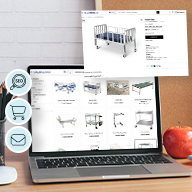How to prepare a loan package and the 5Cs they are evaluated on

Finance & Accounting
298 week ago — 8 min read
In my previous articles I discussed about various business loans and schemes every women entrepreneur should know about and government loan schemes for MSMEs in India. The most important thing while applying for a business loan is preparing your loan application itself and every bank carefully scrutinizes the borrowers before they lend money because apparently, business loans are the riskiest of all.
Here is a 101 on preparing your loan package. Read on...
Statement of purpose
A statement of purpose is one of the most important things that determine how lenders will consider your request for loan. It is either written as a letter or labeled as an ‘Executive Summary’ and is attached to the business plan.
It completely depends on you how you write down the statement of purpose but since it’s the first thing that the bank notices, it is advisable that you make it formal and informative. The following things should be a mandate:
- Brief description of your business
- A narration of how the loan amount can benefit/scale your business
- The amount invested in the business by the owner/entrepreneur
- Amount you are requesting
- Purpose of the loan
- Duration for which you require the loan
- Collaterals if needed
- The time duration in which you will repay the entire amount
Business Plan
You must remember that a strong cohesive business plan is what the lender is in look out for. Your business plan should spell out the exact agenda of your business and how you plan to achieve the short term and long term goals. It should essentially include the following things:
- Full-fledged description of your business and your vision
- Analysis of the market and how viable is your business idea
- Description of products and services
- Brief overview of your organisation and management
A statement of purpose is one of the most important things that determine how lenders will consider your request for loan.
Financial statements
A financial statement encloses your financial capacity, how much revenue your business is generating on a monthly basis and the overall performance of your business. A complete package of the financial statement will include the following things:
- Income statement: An income statement is a measure of how well your business has performed over the past six months or over a year. Expenses that your business has generated and all the profit loss statements are included in the income statement. In case your business is a new venture then you need to include an income prediction statement of atleast a year. And if your business is an already existing business, then you need to provide income statements for the last three years in addition to your current interim income statement.
- Cash flow statement: Cash flow statements analyse and project the inflow and outflow of cash on a monthly basis. A negative cash position is not particularly beneficial for your business as it shows instability. Your package should include the current cash flow statement, projected for at least six months out.
- Balance sheet: The balance sheet shows your net worth (assets minus liabilities). If your business is new it must include your assets and liabilities as per your planned opening date and a year after your opening date. For an existing business, it could be your net worth for a period of three years.
- Personal financial statement: A personal financial statement measures your personal net worth, your assets and liabilities. This statement shows your personal financial stability and helps lenders decide if you are worthy to be given the loan.
Now that you understand how you can prepare your loan transcript, let’s throw light on yet another integral part of applying/obtaining business loans—credit.
Also read: How selling on credit actually benefits your business
The 5 Cs of credit and why they are so important
1. Character
The first C of credit is character and it measures your reliability and trustworthiness. It also refers to your reputation when it comes to financial matters. Methods to assess a borrower’s character can be both subjective and objective in nature. The subjective method may include analysing the borrower’s educational background or employment history and an objective method may include reviewing the borrower’s credit score or history. Most businesses don’t have any business credit, so they must rely on their personal credit score to apply for a business loan.
If a borrower has not managed to pay of his previous debts or has faced bankruptcy, then they might be in trouble as their character is not deemed fit for borrowing money from banks.
2. Capacity
Capacity is your ability to repay the loan taken. Banks and lenders carefully examine your business viability, cash flow statements, repayment history and credit score to gauge if you can repay the loan on time. The capacity to repay the loan is also determined by analysing the number and amount of debt obligations that are still outstanding as compared to the income expected each month.
3. Conditions
Condition is the terms of the loan itself. It may also include the current state of the economy impacting your business directly. Basically lenders want to know how you plan to invest your loan amount. You need to clearly state the reason behind borrowing the loan amount whether it is for capital investment, expansion of an existing business or equipment that you need for your business.
Also read: Why lenders hesitate to extend loans to SMEs?
4. Capital
Capital in business is the amount of money that you have personally invested and the retained earnings from the business. Make sure that you invest properly in your venture before applying for a loan. Lenders and banks not only look at the amount of investment but also how far your venture has been benefited by it.
Banks usually prefer borrowers with a stable business plan and good capital. With the borrower’s money involved, it gives them a sense of security that s/he can pay back in time.
5. Collaterals
Last but not the least is collaterals. Collaterals are assets belonging to the borrower and the lender can rely on them in case of a default. The nature of collateral may consist of inventory, equipment used in your small or medium scale business and personal assets among others. One important thing to remember however is that the value of the collateral should be more than or equal to the loan amount. However, some businesses offer loans without collaterals these days.
Your loan package should be brief, concise and to the point and all the 5Cs of credit in place. The loan application should spell out the management strength of your business and convince the lender that your business is capable of tasting success.
Also read: 6 tips to improve the financial health of your business
Image courtesy: shutterstock.com
To explore business opportunities, link with me by clicking on the 'Connect' button on my eBiz Card.
Disclaimer: The views and opinions expressed in this article are those of the author and do not necessarily reflect the views, official policy or position of GlobalLinker.
Posted by
GlobalLinker StaffWe are a team of experienced industry professionals committed to sharing our knowledge and skills with small & medium enterprises.
Network with SMEs mentioned in this article
View GlobalLinker 's profile
Most read this week
Trending














Comments (2)
Share this content
Please login or Register to join the discussion